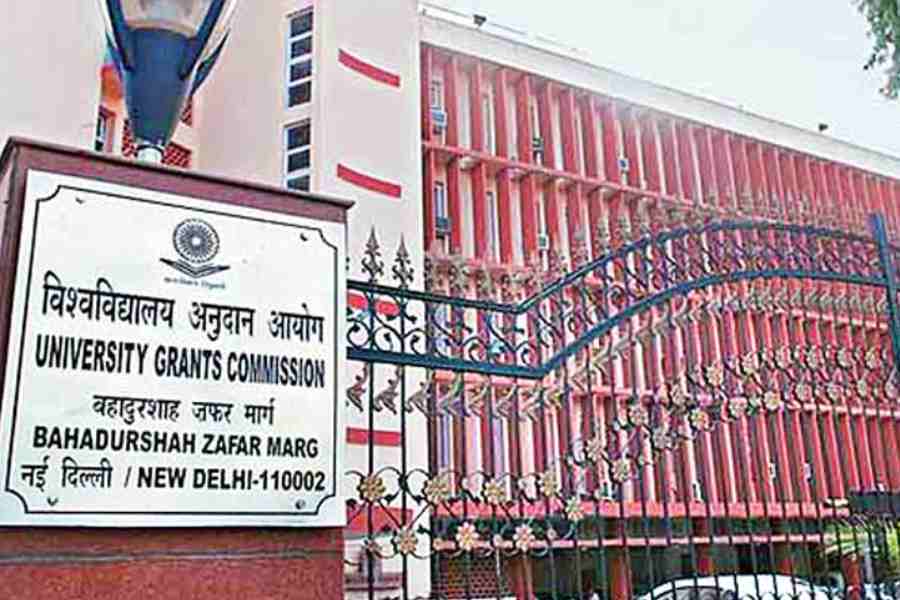UGC issues guidelines for translation of study materials using artificial intelligence


Universities may translate study materials of different subjects into Indian languages using artificial intelligence, according to guidelines issued by higher education regulator University Grants Commission (UGC). This is the first time the UGC has come up with guidelines to be followed by higher educational institutions so that they can offer courses in Indian languages, as envisaged under the National Education Policy.
“‘ANUVADINI’, the Al-based translation tool for Indian languages, developed by the AICTE (All India Council for Technical Education) may be used for translation. This tool has many advantages, such as translation in the format of the source text file, speech-to-text typing, etc.,” the guidelines say.
The guidelines added: “All the editing facilities are also provided in the same tool. The first round of translation may be done through this tool, followed by further manual editing by using the tool.”
According to the guidelines, the accuracy level of the tool at present varies from subject to subject and from language to language, which will gradually improve as more people use it for translation and editing. The authorities believe machine translation will significantly speed up the process rather than only human intervention.
“In case the original text is translated into word-to-word sequence by the translation tool, then for efficient and meaningful translation, it has to be rephrased partially or completely if required,” the guidelines add.
After the AI translation, the text will have to be carefully edited by reading each sentence of both original and translated documents several times to ensure that the proper meaning and context are maintained.
The Commission for Scientific and Technical Terminology has developed standard glossaries of various subjects, which may be used for translation, the UGC said. So that students can easily understand, complex technical terms may be given in English in brackets after the Indian language equivalents, according to the guidelines. If the Indian language equivalent is not available, the English word may be transliterated into the target language script.
Panchanan Mohanty, professor at the School of Languages and Literature at Nalanda University, said the UGC’s guidelines should be modified to produce quality translations. He expressed doubts about the efficacy of machine translation as he had been involved in such processes.“Every language has lexical and structural ambiguities. Therefore, machine-translated outputs have to be carefully edited and validated by trained professionals,” Mohanty said.
Though the guidelines recommend careful editing of materials after machine translation, there is no mention of engaging persons trained in translation.
“Translation is a specialised subject across the world. Any bilingual person cannot be a translator without training. Only those trained in translation theory, practice and assessment should be assigned to edit and validate a machine-translated text,” Mohanty said.
According to the guidelines, “translation shall always convey the complete meaning and concept of the original text. It need not necessarily be a word-to-word translation”.
Mohanty quoted the celebrated translation theorist Peter Newmark, who had said that a bad translator always tries to avoid translating word for word. In fact, translating word for word should be the first step in any translation activity, Mohanty pointed out.
After studying a large body of translated materials, another theorist, Alan Duff, has said the translator must think with the author, not think for the author. The guidelines at one point recommend capturing the complete meaning and concept in the translated text, while at another point it says the translation shall be simple and concise.
A faculty member of Delhi University said the focus on the translation of texts into Indian languages was far removed from ground realities as students were keen to study in English. In the Common University Entrance Test (CUET) this year, 79 per cent of the candidates took the domain papers in English, followed by 20 per cent in Hindi and less than 1 per cent in 11 other Indian languages.
“Students and parents are more interested in studying in English as they see career prospects and development. The government should realise this,” the teacher said.
The AICTE is in the process of translating BTech books into Indian languages. Many engineering colleges are offering courses in Indian languages too.
A professor of technology said students passing out of courses in regional languages would find it difficult to do well in jobs as the medium of exchange is English.